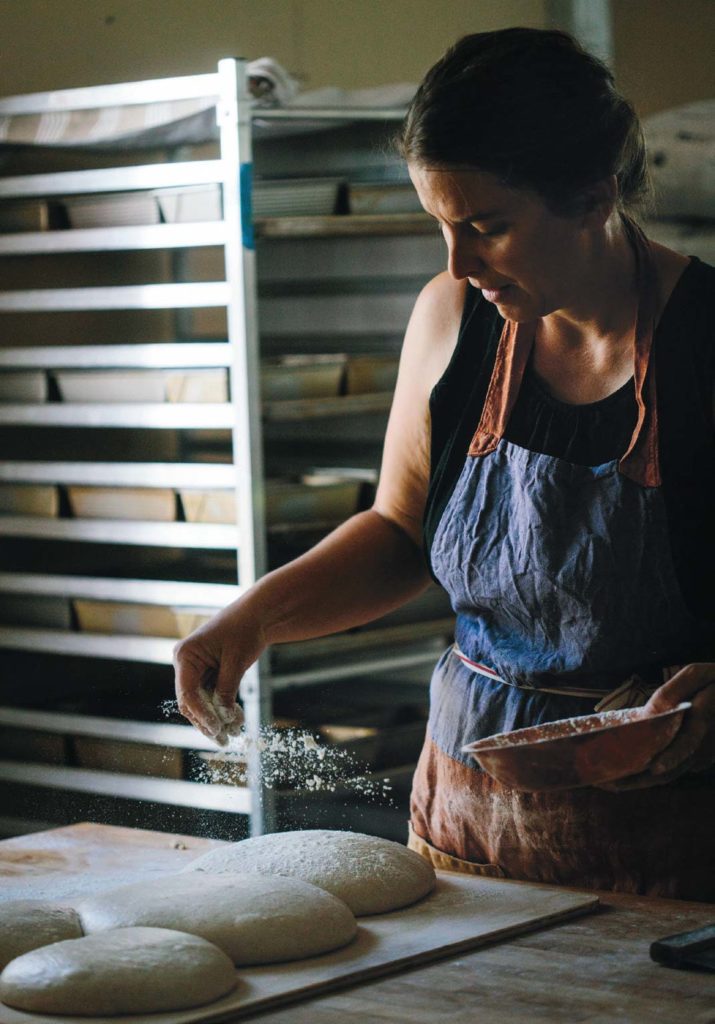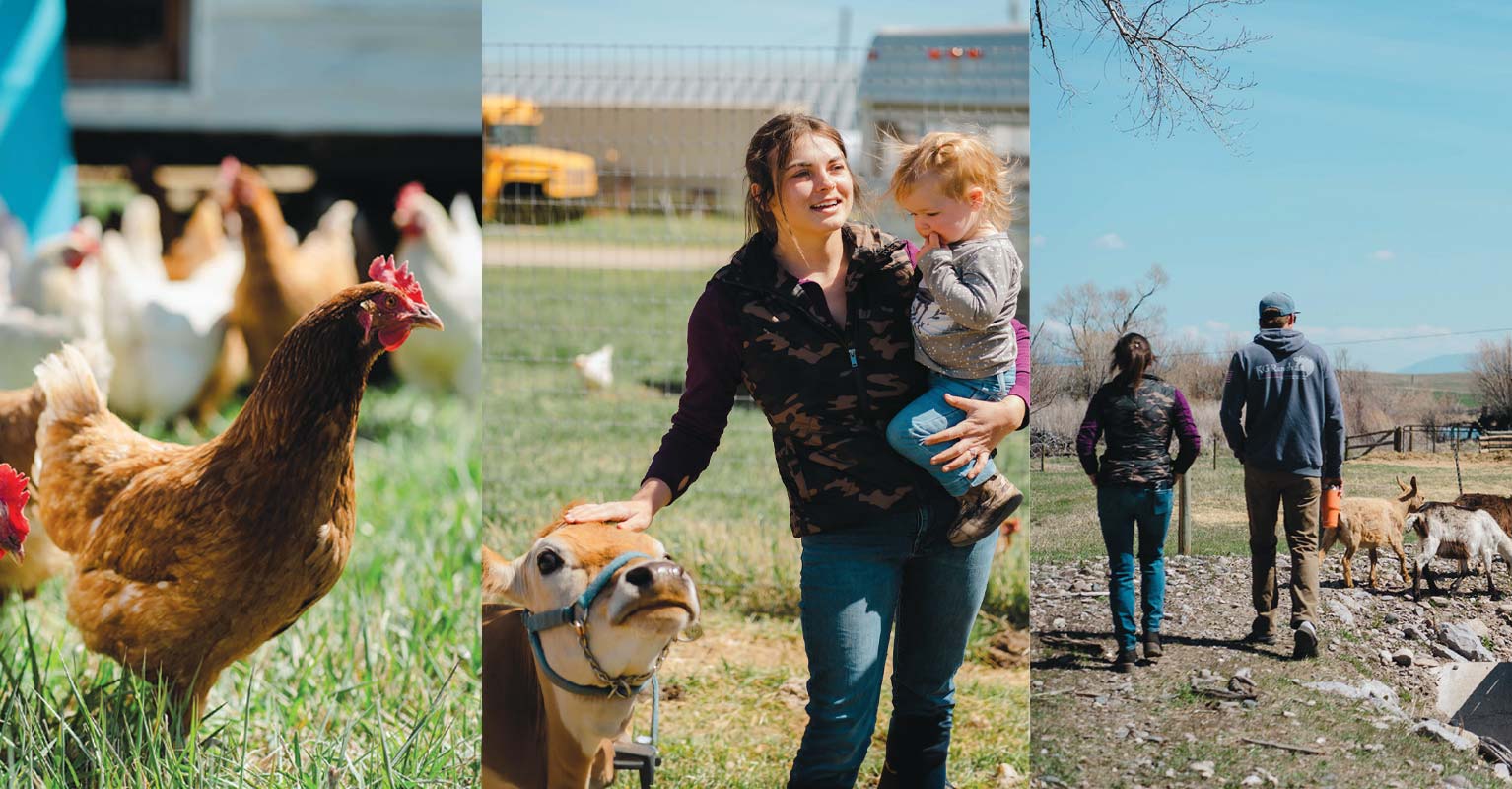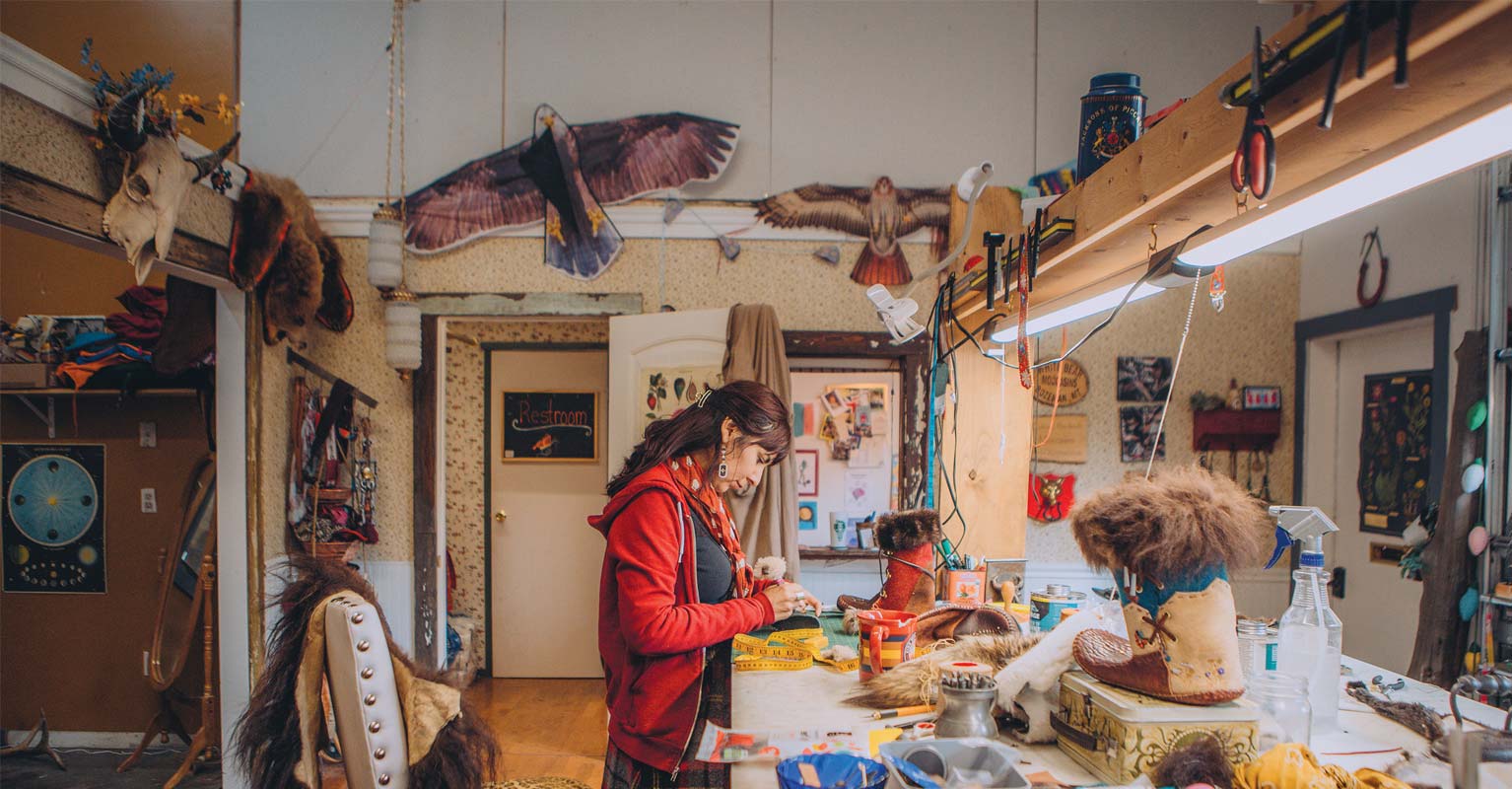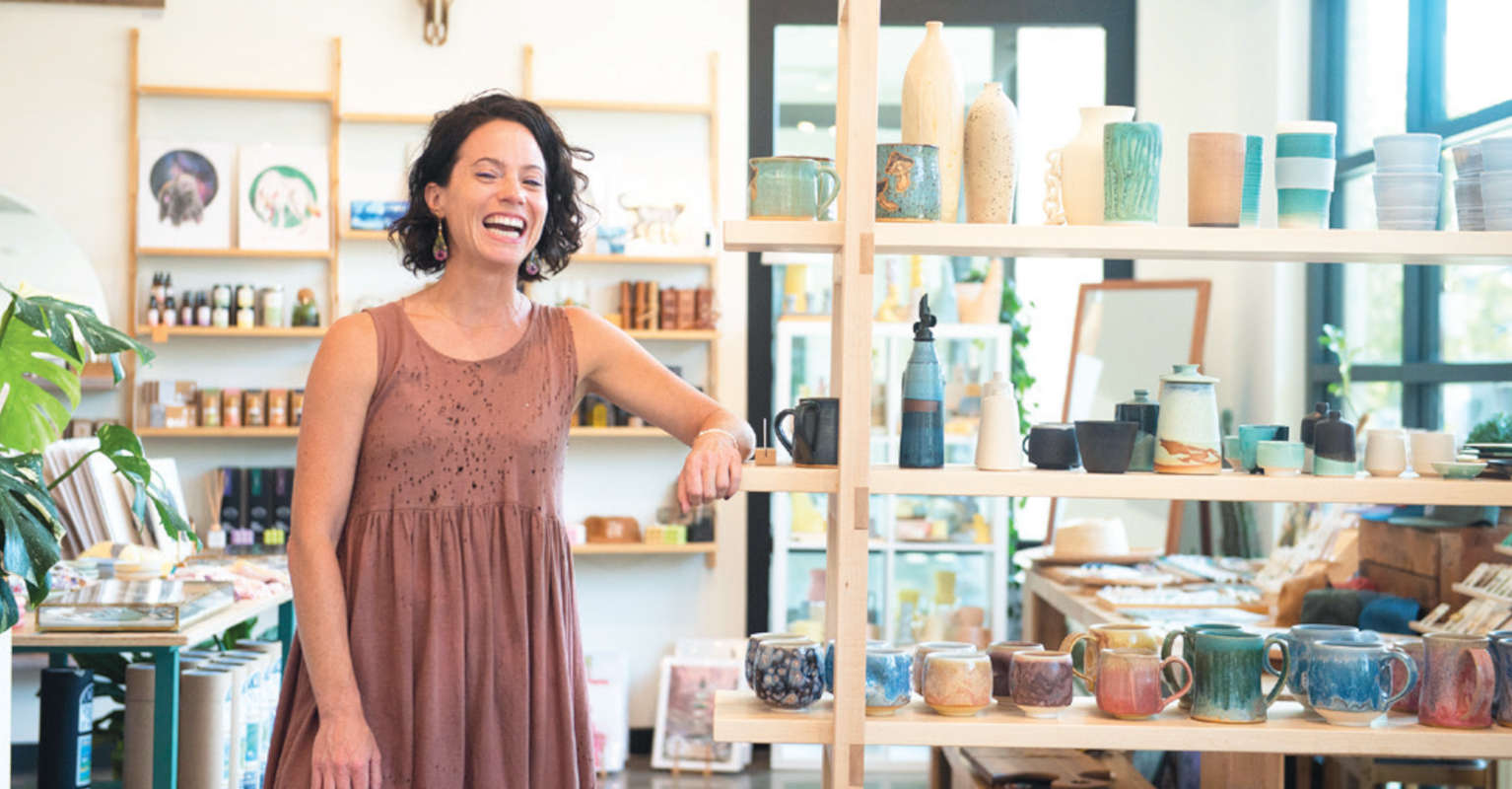There was always bread on Stella Moss’s family table in Germany. When she was inspired to carry on the tradition of bread baking, Moss gained some experience with apprenticeships, though she is overwhelmingly self-taught. She’s grateful for the opportunity she and her husband, a fly-fishing guide, have to pursue their passions. “Bozeman is still considered small, but everyone is so welcoming and warm,” Moss says. “Some of my customers are the same people who visited me at my very first farmers market in 2015.”
Since then, the Gallatin Valley Farmers Market on Saturdays has become a place synonymous with family for her. People keep coming back for Moss’s bread because of the care and attention she puts into it. Hers is an old-roots, multi-day process that involves natural fermentation using natural yeast. And, it’s quite labor intensive.
“I start on Wednesday night,” she says, “mixing the levain and getting everything together. Thursday is mixing and shaping day, and then the bread is in the fridge for 16–20 hours. The long, slow rise really develops the flavor. Friday is baking day in order to get ready for markets.”
Moss has the process down to a fine art, but each time she bakes there’s some variation. Time and temperature can change between bakes, but she embraces those subtle differences. That’s how buyers know that her bread isn’t mass-produced. Moss also plays with a variety of ingredients, connecting people to unique local producers. For example, Moss gets whole-grain flour—including Kamut, an ancient wheat larger than more familiar commercial varieties—in small stone-milled batches from Conservation Grains. She also works with Fort Benton’s Casey Bailey, who supplies hard red winter wheat and spring wheat. She gets her purple corn from Ole Norgaard in Lewistown. Norgaard hand-selects his kernels for the darkest of dark purples in his corn, making for a gorgeous purple corn bread.

For Stella Moss, bread-baking is a multi-day process.
“Flour that sits on a shelf is a dead product. We have no connection to it, to where it came from. With Ole and Conservations Grains, you know the people behind each step of breadmaking. I want to bring that connection back to people.”
“Flour that sits on a shelf is a dead product,” Moss explains. “We have no connection to it, to where it came from. With Ole and Conservations Grains, you know the people behind each step of breadmaking. I want to bring that connection back to people.”
Another community element Moss is thankful for is the Cottage Food Law. This law allows producers of low-risk foods to make goods in their home kitchens and sell them directly to customers. It saves small entrepreneurs in the food industry the time, headache, and cost of commercial food licenses while also ensuring the safety of consumers. “This is an opportunity to try,” she says. “I wouldn’t be able to do what I do without it. I sell out of my house. I’m not looking for anything huge, so the limit of the law is good. It supports our differences. It allows people with small, focused businesses to do a little at a time. It is essential.”
It’s fair to say the law is essential for community members who desire expertly crafted bread as well.




